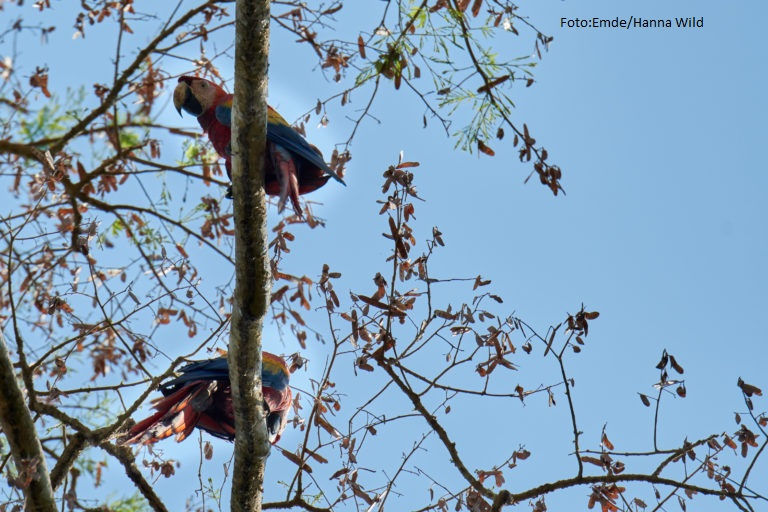Satellite identification of the Scarlet Macaw (Ara macao)
- Alianza

- 22 abr 2019
- 2 Min. de lectura
The Workshop on Identifying Scarlet Macaws via Satellite Transmitters in the Selva Maya, led by Dr. Martin Wikelski (Director of the Max Plank Ornithological Institute) and the Alliance for the Conservation of the Scarlet Macaw in the Selva Maya (comprised of Natura Mexicana, WCS The Wildlife Conservation Society and Friends for Conservation and Development - FCD), was held on August 3rd - 11th . Among the participants were also Dr. Uschi Müller - ICARUS Project Coordinator, representatives of CONAP from Guatemala, CONABIO and CONANP from Mexico and the Forestry Department of Belize. The Workshop took place at Las Guacamayas Biological Station, Laguna del Tigre National Park, in Guatemala.
At first the achievements and challenges of the alliance projects were presented. Dr. Wikelski introduced the attending to the advances in the ICARUS initiative and its potential to fill important information gaps in the conservation of Scarlet Macaws and other species within the Selva Maya and the world.

During the workshop, eObs transmitters were placed on three Scarlet Macaws raised in the WCS field laboratory and two more on wild chicks at the El Perú nesting site. The devices operate by means of GPS and solar panels and are placed on the bird's back so as not to hinder its mobility. Thanks to these transmitters, the movement patterns of the Scarlet Macaws, that migrate from the Maya Biosphere Reserve in Guatemala to the Montes Azules Biosphere Reserve in Chiapas, Mexico at the end of their reproductive season, will be known. With these dates it will also be possible to compare the survival rate of chicks from managed nests with that of chicks from wild nests.. On the other hand, identification (micro)chips were placed to individually monitor specimens raised in laboratories or wild nests. These chips were used to identify the origin of individuals confiscated by authorities in charge of controlling illegal wildlife trafficking and thereby prosecuting macaw traffickers and improving measures to reduce these illegal activities.

It is expected that both technologies will be highly useful in generating information which will strengthen the conservation of and recovery actions for the Scarlet Macaw population in the Selva Maya Forest.

Comentarios